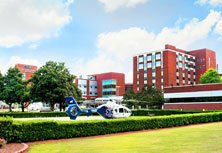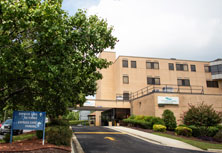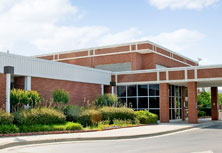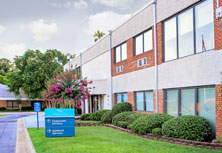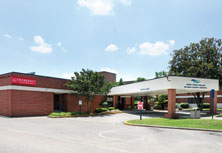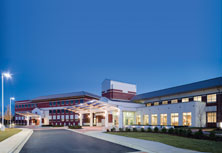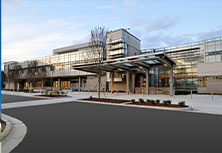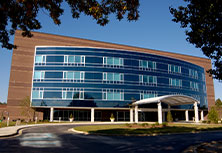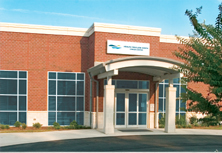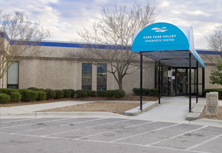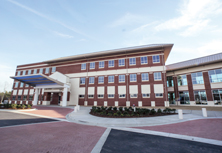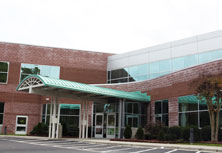Patient Stories
Cape Fear Valley's orthopedic program is not only carefully thought out and rigorous to meet the needs of our patient's, it's also innovative and award-winning. But don't take our word it. Listen to what a few of our former patients have to say about us:
Jeremy Perry - Hand and Arm
Robert Girouard - Double Hip Replacement / Knee Replacement
Dougald Clark - Double Knee Replacements
Charles DiNatale - Arthritic Hip Surgery
Charles Krupa - Reverse Shoulder Joint Surgery
Diane Marshall - Knee Replacement
Kyle Powers - Hip Joint Resurfacing
Jeremy Perry
Four surgeries on hand and arm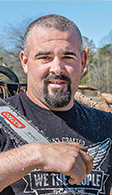
 Playing pool and shooting darts were favorite pastimes for Jeremy Perry, who moved to Fayetteville six years ago from upstate New York for the warmer weather and to reunite with family. He bought a house and was setting down roots when he suffered an injury at work. "I was hauling fuel in my tractor-trailer, and when I went to pull the hose off, I felt a snap in my arm," says Perry. "I started losing feeling in my fingers and hand, up my right arm." Perry said his fingers and hand began to curl up, which led him to Ben Levine, MD, an orthopedic surgeon in Fayetteville.
Playing pool and shooting darts were favorite pastimes for Jeremy Perry, who moved to Fayetteville six years ago from upstate New York for the warmer weather and to reunite with family. He bought a house and was setting down roots when he suffered an injury at work. "I was hauling fuel in my tractor-trailer, and when I went to pull the hose off, I felt a snap in my arm," says Perry. "I started losing feeling in my fingers and hand, up my right arm." Perry said his fingers and hand began to curl up, which led him to Ben Levine, MD, an orthopedic surgeon in Fayetteville.
"I had to stop doing some of the things that I loved to do or try to do them with my left hand. Dr. Levine said that it was my ulnar nerve, and so we started down the road of surgery and therapy," Perry says. At age 33, Perry developed ulnar nerve palsy, a condition that can affect the ability to make fine movements or perform routine tasks.
He had four surgeries and worked with a therapist multiple times a week to repair the nerve damage in his hand and arm. Now that Perry has regained feeling and function in his hand and arm, he has been able to open his own business in construction land management, working with heavy equipment.
He says being able to see a local physician was "absolutely amazing.""The procedures were here, the appointments were easy to make, and I didn't have to travel," Perry says. "Plus, I can't say enough about Dr. Levine. His bedside manner is amazing. You can tell when he talks to you, he cares about you. He wanted to know more about me, so he knew how to help me. Getting that function back in my hand and arm was life-changing."
Robert Girouard
Two Hip Replacements AND A Knee Replacement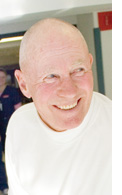
 Robert Girouard, 66, has had two hip replacements and a knee replacement. A retired lieutenant colonel, he began experiencing excruciating pain in his knee several years ago.
Robert Girouard, 66, has had two hip replacements and a knee replacement. A retired lieutenant colonel, he began experiencing excruciating pain in his knee several years ago.
“After 24 years of running in Army boots on hard pavement, I had developed degenerative arthritis,” said Robert. “I had surgery to replace my knee joint and a year later developed pain in my right hip.”
The former soldier did not realize it at the time, but he later learned from his surgeon that when he tried to avoid the pain in his knee, he inadvertently put all his weight on his hip. This lead to additional joint replacement surgeries.
Today the avid golfer carries his own bag, often walking all 18 holes.
“I’m completely pain free,” Robert said with a chuckle. “The only medication I take these days is a vitamin.”
Dougald Clark
Two Knee Replacements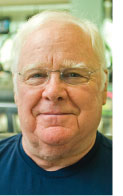
 Dougald Clark was always athletic and always on the go, but the years of physical activity eventually took a toll on his knees. The cartilage in them wore down so badly that his doctors eventually told him that he would need to have them replaced.
Dougald Clark was always athletic and always on the go, but the years of physical activity eventually took a toll on his knees. The cartilage in them wore down so badly that his doctors eventually told him that he would need to have them replaced.
Most people would have opted to have two separate surgeries to lessen the pain, but not Clark. The retired Fayetteville judge dove into surgery, like he used to dive into the ocean while scuba diving.
“I figured if I did one, I probably wouldn’t go back and do the other,” says Clark, with a chuckle. “Besides, that would have meant two hospitalizations instead of one.”
The total knee replacement in his right leg and partial knee replacement in his left turned out so well that he was discharged from the hospital in less than a week.
He was walking normally again within two weeks and back lifting weights at HealthPlex a month after that.
His rehabilitative progress stunned everyone but Clark. He attributed his healing prowess to his skilled orthopedic surgeon and Cape Fear Valley’s Joint Replacement Surgery Program, which helped jumpstart his and countless others’ road to recovery.
Charles DiNatale
Congenital Arthritic Hip Surgery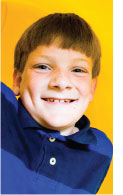
 A few years ago, Jennifer DiNatale noticed her then-six-year-old son, Charles, visibly limping after basketball practice. The painful episodes grew worse with each practice.
A few years ago, Jennifer DiNatale noticed her then-six-year-old son, Charles, visibly limping after basketball practice. The painful episodes grew worse with each practice.
An MRI scan revealed Charles had a hip deformity but no firm diagnosis. There were no pediatric orthopedists in their hometown of Wilmington, so the family accepted a referral and drove two hours to Fayetteville.
Charles was diagnosed with Legg Calve-Perthes Disease (LCPD), a degenerative arthritis condition that affects 1 in 1,200 children. The disease is caused by loss of blood flow to the hip joint, causing the head of the femur bone in the upper thigh to erode or collapse into the hip socket.
The disease’s severity is determined by how much of the bone in the femoral head is affected. With Charles it was 100 percent involvement, which greatly decreased his chances for a full recovery. Undeterred, Charles underwent surgery at Cape Fear Valley Medical Center to reshape his femoral head bone, so it could tilt back up into the hip socket better and to promote better growth. A metal plate and screws were then inserted on top of the femoral head to keep it together while it healed for a year.
Charles Krupa
Reverse Shoulder Joint Surgery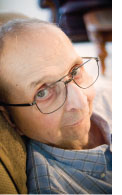
 If anyone could be a spokesman for Reverse Shoulder Joint Replacement Surgery, it would be Charles Krupa.
If anyone could be a spokesman for Reverse Shoulder Joint Replacement Surgery, it would be Charles Krupa.
The cartilage in the Fayetteville retiree’s right shoulder was so damaged from rheumatoid arthritis that he could no longer lift his arm. Even worse, doctors told him traditional shoulder joint replacement surgery was not an option because of the arthritis’ severity.
The bleak outlook changed dramatically after Krupa underwent Reverse Shoulder Joint Replacement Surgery, which helped him regain the mobility he lost in his shoulder so long ago.
The still relatively new procedure involves placing an artificial socket joint into the patient’s shoulder area in a reverse layout. Krupa’s operation went so well that he plans on having his other shoulder replaced, as well.
“It’s without comparison the best operation I’ve ever had to go through,” says Krupa, 68, “as far as no pain right out of surgery.”
Diane Marshall
Knee Replacement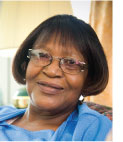
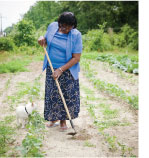 Orthopedic surgeons have a saying: You know it’s time to come see me, when you can’t deal with the pain anymore. Diane Marshall’s time had come last summer.
Orthopedic surgeons have a saying: You know it’s time to come see me, when you can’t deal with the pain anymore. Diane Marshall’s time had come last summer.
The 56-year-old Elizabethtown retiree has had chronic knee pain in her left leg since 2007. Her knee pain forced her to give up gardening, her favorite hobby, because carrying around a chair to sit in while harvesting the land was just too much.
Marshall’s knee pain eventually grew so bad that she often chose just to stay in bed. That’s when she decided to have knee replacement surgery at Cape Fear Valley Medical Center.
Unlike her first knee replacement, Marshall underwent group physical therapy after surgery in Cape Fear Valley’s innovative Joint Replacement Club.
The physical therapy program not only allowed her to heal, but to also bond with other joint replacement patients who could truly share her pain.
Today, Marshall is once again doing the little things she had to give up due to knee pain, like going for quick walks or spending quiet time in her garden. She’s so pleased her with her surgery outcome that she has begun referring friends.
“I tell everybody.” Marshall says. “The secret is out.”
Kyle Powers
Hip Joint Resurfacing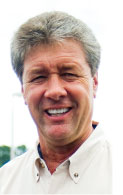
 Kyle Powers didn’t count on needing hip surgery when he was barely eligible to join AARP. The 51-year-old Fayetteville auto service and parts professional spends his days constantly walking up and down stairs, getting in and out of his chair and walking across the room. The daily toll made his knees ache as he wobbled from side-to-side to compensate.
Kyle Powers didn’t count on needing hip surgery when he was barely eligible to join AARP. The 51-year-old Fayetteville auto service and parts professional spends his days constantly walking up and down stairs, getting in and out of his chair and walking across the room. The daily toll made his knees ache as he wobbled from side-to-side to compensate.
X-rays showed no knee damage but did reveal tell-tale signs of bone-on-bone deterioration in both of his hip joints. Powers briefly considered hip replacement surgery for his left hip as the pain worsened, but he also wanted to maintain mobility because he’s an avid golfer.
Powers opted for Birmingham Hip Resurfacing instead. The less-invasive procedure removes the worn cartilage and damaged top layer of bone on top of the upper thigh bone and in the hip joint and replaces them with a new, low-wearing metal surface.
The surgery not only spared much of the original bone in Powers’ hip, it also had him back on the golf greens in no time.
“They told me I would still function at a high level of performance,” Powers says of his surgery. “That just sounded like the perfect option for me.”
